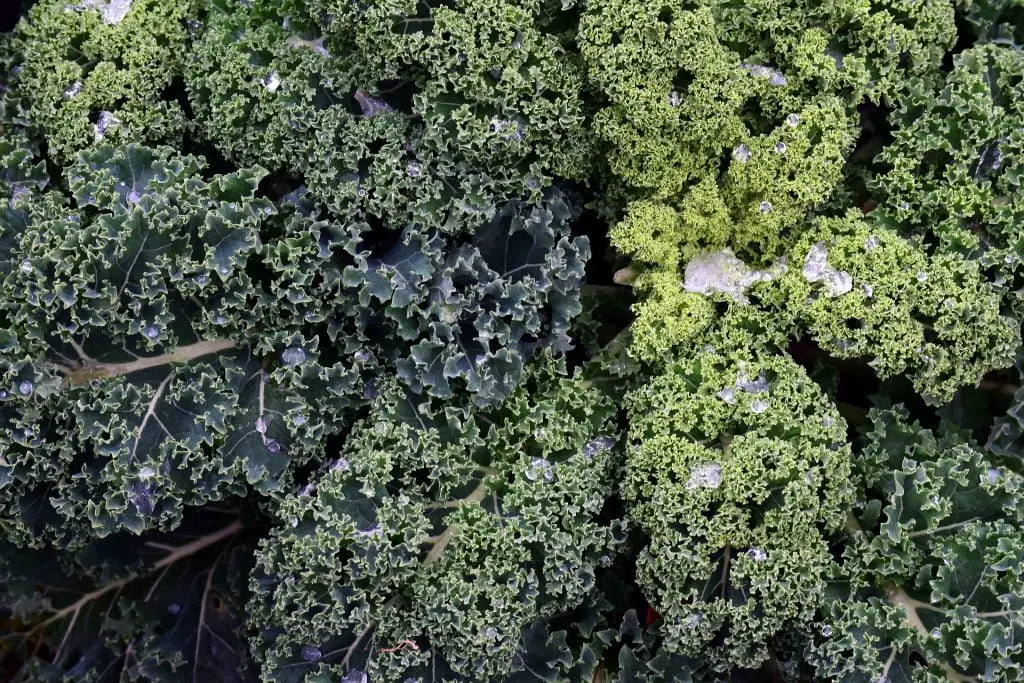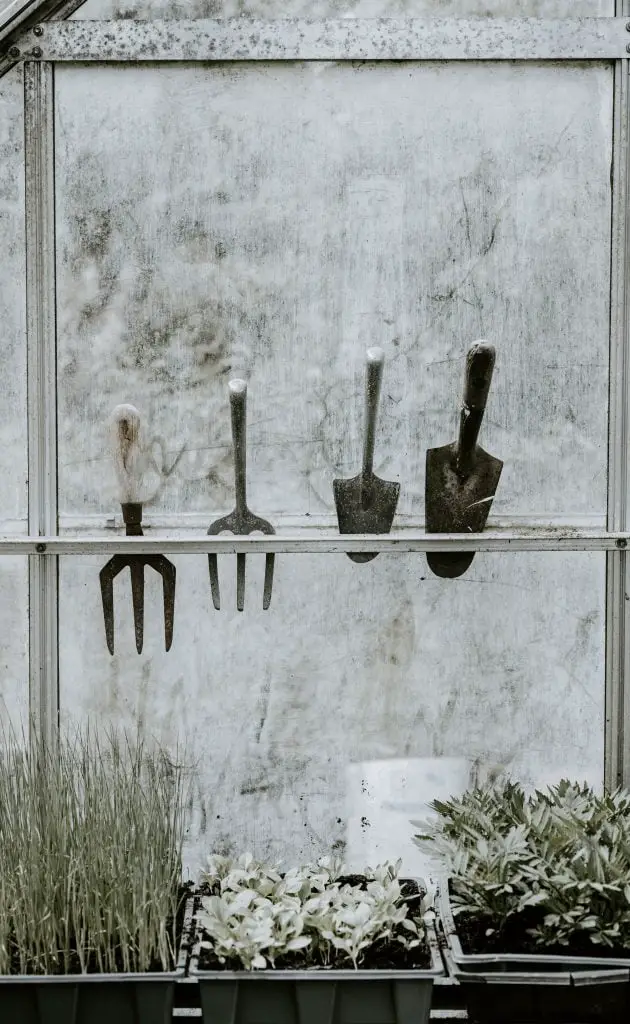When Should I Plant Winter Vegetables? Growing Winter vegetables successfully is far more tricky than growing Summer Crops. However, with a little extra planning and care, you can be harvesting fresh vegetables from your kitchen garden all year round.
To be able to harvest vegetables in the cooler months of the year, you need to plant most vegetables around Mid Summer. This may seem counter intuitive, but all vegetables whether they can tolerate cold temperatures or not, require reasonably warm temperatures to grow and develop. As the temperatures fall, the most developed vegetables will be able to sit in the garden throughout the Winter, until you are ready to pick them.
However, the growing of vegetables through this period is limited by the severity of the Winter, in your location. This can be mitigated, somewhat by selecting an area with an accommodating microclimate within your yard. This can be further aided by providing the plants with additional protection.
Choosing What To Grow
When choosing what vegetables to grow in your particular location, it is important to understand the minimum temperatures that a particular vegetable can tolerate, and also whether the vegetable needs to be planted in Summer or Autumn. Some vegetables are most suited to an Autumn planting as they can get going in Autumn before sitting through Winter and producing a harvest in the Spring. The table below provides details of this information.
| Crop | Minimum Temp. | Summer or Autumn Planting | Store in Garden* | Early Spring Harvest |
| Beetroot | 15°F/-9°C | Summer | • | • |
| Broccoli | 10°F/-12°C | Autumn | • | |
| Brussels Sprouts | 10°F/-12°C | Summer | ||
| Cabbage | 10°F/-12°C | Summer | • | • |
| Carrot | 15°F/-9°C | Autumn | • | |
| Cauliflower | 10°F/-12°C | Summer | ||
| Celeriac | 20°F/-7°C | Summer | • | |
| Celery | 10°F/-12°C | Autumn | • | |
| Fava Bean | 15°F/-9°C | Autumn | • | |
| Garlic | 0°F/-18°C | Autumn | • | |
| Kale | 0°F/-18°C | Summer/Autumn | • | |
| Kohlrabi | 15°F/-9°C | Summer | ||
| Leek | 0°F/-18°C | Summer | • | |
| Lettuce | 15°F/-9°C | Summer/Autumn | • | |
| Onion | 0°F/-18°C | Autumn | • | |
| Parsley | 0°F/-18°C | Summer | • | |
| Radish | 10°F/-12°C | Summer/Autumn | • | |
| Rutabaga | 20°F/-7°C | Summer | • | |
| Swiss Chard | 10°F/-12°C | Summer/Autumn | • | |
| Turnip | 10°F/-12°C | Summer/Autumn | • |
Choosing The Best Location In Your Yard
When you live in a region with a challenging Winter climate, success can hinge on the location of your Winter garden. The microclimate from yard to yard can vary significantly. One particularly obvious example of this can be seen when comparing Urban Gardens to Rural Gardens. Urban Gardens tend to be warmer, due to the capacity of a building to absorb solar energy and radiate it out at night. As there are many more buildings in Urban setting the gardens tend to be warmer.
In addition to this, there are certain areas within the landscape that are less favourable for vegetable gardens. These include areas that are highly exposed to winds or natural frost pockets, such as the bottom of valleys. Additionally, North-facing slopes (in the Northern Hemisphere) should be avoided, due to the reduced level of sun.
The absolutely ideal location for a Winter Vegetable Garden is on the Southern side of a brick structure (in the Northern Hemisphere). The large mass of bricks provides the capacity to store large quantities of thermal energy that is naturally used to warm the garden.

If this type of area does not exist, it can be created by placing bricks or large rocks next to your garden. Alternatively, steel drums full of water and laid on their side could also potentially be used for this purpose.
Preparing The Soil
The other key consideration is the condition of the soil. During Winter the volume of Rain and Snow is relatively high, so good drainage is essential. If your soil is prone to becoming water logged it may be necessary to create raised beds.
If that is not an option, clay based soils can be modified over time with the addition of compost. This is best done by applying a layer of
compost 5 to 10 cm (2 to 4 inches) before planting.
When To Plant
Despite the general indication given above, it is necessary to calculate the best time to plant based on your specific location, particularly in locations that have Hot Summers and Cold Winters. The reason for this is that the plants may mature too soon, if planted too early. Many Winter vegetables wilt in the heat or bolt, ruining the crop.
On the other hand, planting too late will result in plants not maturing at all. To determine the ideal time to plant a particular vegetable, you can use the following formula ~
Days to Harvest
Plus
Additional 14 days (added for slower than expected growth during Autumn)
Equals
The Number of Days to count back from first frost date
However, a word of warning regarding the information supplied by some seed companies. The information on the seed packets is often not that reliable. It is common for seed companies to underestimate, the number of days from planting until harvest.
I suspect there are two main reasons this occurs, the first is that many seed companies appear to quote harvest dates based upon the transplant date of a seedling, rather than planting from a seed, even though they are selling a seed. However, what the numbers of days or weeks to harvest referred to is, is never explicitly stated on most seed packets.

The other likely reason I am guessing, is that seed companies probably look at what is quoted by their competitors and at least quote the same, to ensure that they are not commercially advantaged. Unfortunately, this practice brings into question of how reliable the claims are that seed companies make about a variety, being an early or late variety.
To show the degree of inaccuracy a study comparing the dates of the first harvest on seed packets, versus the actual first harvest dates was released by Ohio State University in 2017. The results indicate that in most cases, those vegetables that are most likely to be sown directly, have generally more accurate indications of days to harvest, ±2 weeks, on the seed packets. For those that are most likely to be transplanted after sowing, a general rule of thumb would be add between 4 to 6 weeks for most vegetables to the quoted harvest time, and 6 to 8 weeks for Tomatoes, Peppers and Eggplants.

As such, it is a good idea to seek information from independent resources, such as academic studies. Here is a list of some links to several studies from the University of Tennessee, University of California or Ohio State University to get you started.
However, for convenience the table below provides a general guide with approximate planting dates based on living in the Northern Hemisphere.
| Crop | Planting Date (Seed) | Comment |
| Beetroot | 15th July | Best multisown, 4 seeds per cell and transplanted as clumps. |
| Broccoli | 15th June | Can be planted later to produce a crop in early Spring. |
| Brussels Sprouts | 10th to 15th July | |
| Cabbage | 25th June | Early, Mid and Late varieties of Cabbage are available. Mid to late varieties should be selected when sowing at this time of year. To read more, click here. |
| Carrot | 15th July | Germination can be challenging, try pre-soaking the seed, for more details, click here. |
| Cauliflower | 31st July | |
| Celeriac | 15th June | |
| Celery | 1st to 15th July | |
| Fava Bean | Anytime in Feb or Mar | Will produce a crop in Spring. |
| Garlic | Late August | Garlic needs a period of cool in order to divide. |
| Jerusalem Artichoke | Planted anytime | |
| Kale | 15th July | Can be planted earlier if desired. |
| Kohlrabi | 15th June | |
| Leek | 31st July | Best multisown, 4 seeds per cell and transplanted as clumps. |
| Lettuce | Plant up to early August | Sow every 4 weeks to ensure a continuous supply. |
| Onion | Anytime in August | Best multi-sown, 4 seeds per cell and transplanted as clumps. |
| Parsley | 1st August | Seeds should be presoaked |
| Radish | Plant up to early August | Radish will only take 4 to 6 weeks to harvest. Sow successional crops. |
| Rutabaga | 10th to 31st July | |
| Swiss Chard | June or July | Can be planted earlier if desired. |
| Turnip | 1st August |
If you are looking to purchase seed for any of the vegetables listed above, the lowest cost online provide I have found in the US is Seeds Now. They are a seed company that specialises in Heirloom varieties and carries a relatively broad range of seeds. Click here to visit their website. In the UK I would suggest Thompson & Morgan they also have a wide selection of seeds.
Caring For Winter Vegetables Early On
Due to the need to plant many Winter Vegetables at the height of Summer, there will often be hot and sunny periods that they are exposed to. During these periods, the young plants will need extra care. When transplanting seedlings you need to water daily, initially and possibly even more frequently than that, if you are growing from seeds and the plants are newly germinated.
To maintain moisture in the soil and protect young plants from the sun it may also be necessary to shade them, using temporary structures. Umbrellas are useful for this purpose and make good shade structures. However, as young plants become established these additional measures become largely redundant, as mulch is usually sufficient to hold moisture in the soil.
Later in the growing season, when the extreme temperature has passed, there is generally more moisture around and slugs and snails can become problematic. It is best to try and reduce the population in early Autumn before the breeding season arrives.
This can be done by using snail pellets and beer traps. There is a range of different snail pellet available on Amazon. It also helps to leave extra space between plants that will remain in the garden, during the Winter. More closely spaced plants are more susceptible to snail and slug damage. Additionally, they have a greater tendency to rot in cool, wet weather, when the air circulation is not adequate.

Preparing For Frost
During Autumn, preparation of the garden for the arrival of frost, should intensify. The first priority should always be to harvest all ripe fruit from tender crops before they are damaged by frost. These crops typically include crops such as Tomatoes, Zucchini, Melons, Eggplants, Cucumbers, and Peppers. These crops should be stored until needed.
Any unripened fruit on these plants can be protected if there is only light frost expected (ie the temperature is not expected to fall below -2°C (30°F)), in the hope that warm days will mature at least some of the fruit. To do this, anything that stops the frost from settling on the plants can be used, this could include frost blankets or a mini hoop house. Both of these options are available on Amazon, to find them click the links above.
Cool-weather crops such as Cabbage, Cauliflower, Broccoli, Kale, Carrots, Brussels Sprouts, Leeks, Beetroot, and Turnips will not need protection from light frost.
Crop Protection In Winter
With the deterioration in weather, protection of even the hardiest plants will help to optimise your harvests. This protection is necessary for not only cold but also incessant rain, which can saturate the soil, encouraging slugs and snails, and creating the ideal environment for diseases.
To avoid many of these problems it is best to use Cloche, Cold Frame or Row Cover to protect your plants. Cold Frames and Hotbeds are relatively inexpensive structures for growing cool-weather crops. Cold Frames and Hot Beds are essentially boxes with a lid and no base, clad with clear plastic or glass. They are placed over the growing plants to trap heat.
In the case of Cold Frames, they rely on the Sun for their sole source of heat. The heat is collected when the solar radiation penetrates clear sides. However, Hotbeds also have an artificial heat source generated from below the soil. The heat source traditionally was generated by decomposing manure, buried beneath the plants rooting zone. However, to provide sufficient heat to make an appreciable difference around a Tonne of material is required, which is impractical for most gardeners.

The modern method, which is far more practical for home gardeners to use, is heating cables that are buried in the soil. These can be purchased from a number of places, here is a link to one source available on Amazon.
Irrespective of whether you use a Cold Frame or Hotbed the ideal location is on a South Facing Slope (this assumes you live in the Northern Hemisphere), as it provides good drainage and maximises the exposure to the sun. Sinking the Cold Frame into the ground a little, also provides some insulation from the cold.
Cold Frames can be purchased commercially from Amazon or you can construct your own. They are most commonly built from wood. If you have an old glass door they are ideal, as a lid. When constructing them it is common to make the front of the cold frame lower. The tilted surface maximises the light entering the Cold Frame. There are numerous plans available online, click here to see 26 different plans.
To optimise the temperature within the frames many designs feature a passive solar energy storage. This can be achieved by constructing the rear wall of the frame with brick or including black containers filled with water. The features will absorb heat during the day and release it at night.
However, when using cold frames ventilation is required to ensure that that the plants do not over heat. When the temperature during the day rises above 15°C (60°F) the lid needs to be raised during the day and lowered at night to conserve the the heat.
To convert a cold frame to a hotbed dig a hole 25 cm (10 inches) deep and lay down thermostatically controlled electric cable evenly across the hole to ensure an even distribution of heat but do not allow the cable to cross. Cover it with 5 cm (2 inches) of sand or soil then cover it with weed mat or something similar. This will prevent you from accidently damaging the cable. Finally cover the weed mat with 15cm (6 inches) of top soil to plant into.
Cloches and row covers are also another portable alternative to the cold frame. Cloches cover a single plant and were traditionally made of glass. The advantage of glass is that the cloche is heavier and is more resistant to windy conditions. The disadvantage is that they are significantly more expensive, are more difficult to store when not in use and most don’t have ventilation. As such we recommend using plastic ones can be purchased from numerous different garden suppliers on Amazon, click on the link to see an example.
Alternately you can use old 3 litre milk cartons with the bottom cut off. They don’t look as nice but they are cheap. When using cloches ensure that the vents remain open as they can quickly heat up if not ventilated.
Row Covers can be used to cover multiple plants and vary in size depending the size of plant you are trying to protect. You can assemble an row cover by bending a 5 to 6 foot piece of concrete reinforcing wire. It can then be covered with plastic. Alternatively, there is row cover kits that come with hoops and a plastic cover.
The particular row cover kit that we recommend is the Growsun Garden Tunnel Plant Cover which is available from Amazon and is shown below. The reason for this is that it can be anchored into the ground which is more suitable for windy conditions. It also contains clips on the hoops which allows the cover to be fixed to each individual hoop making the structure more resilient to heavy snow falls.


